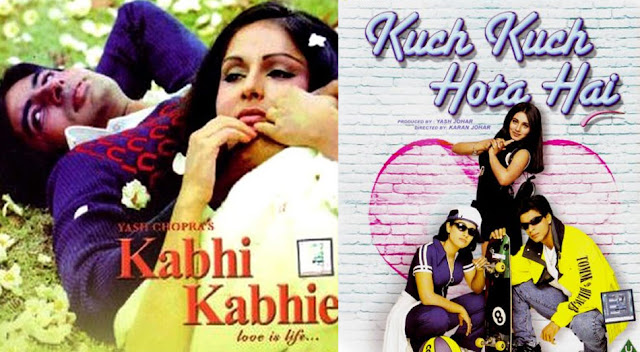The Morphing Indian Love Story
The
Morphing Indian Love Story
If Love is
blind, it must necessarily have life. And if love has life, the English
dictionary must classify it as a common noun. All living things - man, woman,
plant, animal are common nouns. The English dictionary, however, classifies
‘love’ as an abstract noun.
Love, truly
was an abstract concept in India around its independence ( 1940s and 1950s).
While It was present in folklore and mythology (Heer Ranjha, Laila Majnu, Dhola Maru, Nala Damayanti et al), it was
hardly seen in the real world. For the larger Indian society, romantic
relationship existed only post-marriage.
Gradually India,
as a society, evolved. Love story started entering the aspirations of Indian
youth. Love story was gossiped but rarely did culminate in a permanent bond. And
these middle class aspirations gave birth to era of romantic films in 60s and
70s ( Love in Simla, Love in Tokyo, Mere
Mehboob, Kashmir Ki Kali, Kabhi Kabhie etc ….). Their continued success
proved existence of inner yearnings of the youth towards romance, even though
suppressed then by the society. These romantic films also addressed an
important societal issue - the rich and poor divide ( Bobby – 1973). Socialist India with an undercurrent for romance relished
such subjects. But to the same socialist nation, inter-community love story was
still an alien concept. Till, it was in
1981 that Ek Duje ke Liye ( remake of
Telugu Maro Charitra ) became the seminal film for inter-community
marriages, opening doors for new kind of bondings among Indian youth. Vasu and
Sapna resonated with the masses across India, marketing the commencement of a
new era – an era of inter-community marriages.
And what
was the big factor that brought about this new wave ? It was the girl education.
Girl education that gathered momentum in 60s and 70s enabled larger interaction
between boys and girls from different communities who earlier would live and
interact only with people of their own community.
While
inter-community marriages had commenced in 1980s, platonic friendship among
boys and girls was still uncommon. Maine
Pyar Kiya (1989) summarised the mood of the time - “Ek
Ladka aur ek Ladki kabhi dost nahin ho sakte”. Relationship between a boy
and a girl almost always had to have a romantic connotation.
Economic
changes are quite instrumental in bringing societal trends. With Liberalisation
and Globalisation (1991), more women took to higher education, more women
joined work force and male-female interaction began on various new fronts. Kuch Kuch Hota hain (1999) broke the typecast
of Maine Pyar Kiya and distinguished
boy-girl friendship from an affair. It clearly portrayed how the bond between
young men and women could have different shades. Indian society started seeing
boys and girls also as friends.
The new
millennium saw male-female relationship getting more evolved and matured. Marriage
ceased to be the only logical climax of every love affair; live-in relationship
started getting acceptable (Salaam
Namaste – 2005). Also, marriage between an elderly man and and young woman
became acceptable ; while Lamhe (1991)
had not worked with audience but Cheeni
Kum (2007) connected well with the audience. The fairer sex became powerful
enough to defy male partner’s unreasonable attitude ( Queen – 2014 ).
So the
male-female relationship that at beginning of post-independence India was
characterized by female partners addressing male partners as “swami” or “nath” has now turned to be relationship of equals. Divorce then would
put a full stop for another bonding but now break ups open path for new
relationships. From a time of pyar
zindagi se sirf ek baar hota hai, we have moved to an era of mutiple
relationships before the final relationship. The binary nature of status
“single” or “married” now has added many additional options for status - in
relationship, separated, live-in, long distance relationship, divorced, just
friends or ‘its complicated’. While we did away with the concept of child
marriage but teenage affairs are now an intrinsic part of our society. Triple
Talaq is banned but breakups through text messaging is in vogue.
Which times
were better ? There will be never be one correct answer to it. What is
undisputedly correct, however, is that love in the Indian society has evolved
over decades. And whatever evolves survives ; and what survives has life. May
be English dictionary will one day take cognizance of this morphing Indian love
story and accept the fact that love indeed has life, leading to classification
of love as a common noun. But even if it keeps a blind eye towards this, we
Indians will continue our celebration of love.
Happy
Valentine’s Day…!







Comments
Post a Comment